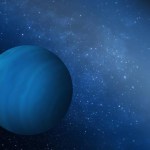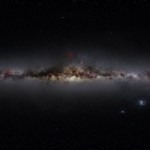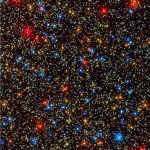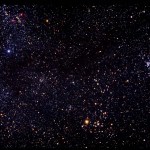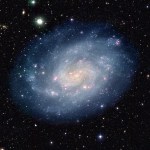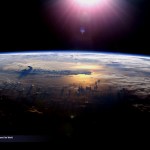star formation
"Like all animals, human beings have always taken what they want from nature. But we are the rogue species. We are unique in our ability to use resources on a scale and at a speed that our fellow species can't." -Edward Burtynsky
It's really a romantic notion when you think about it: the heavens, the Milky Way, is lined with hundreds of billions of stars, each with their own unique and varied solar systems.
Image credit: 湖北直行便 of AstroArts, via http://www.astroarts.jp/photo-gallery/photo/13870.html.
But beyond that -- in addition to the stars -- there are hundreds of billions of planets…
"Let the great world spin for ever down the ringing grooves of change." -Alfred Lord Tennyson
Welcome back, for another Messier Monday here on Starts With A Bang! Each Monday, we've been taking a look at one of the 110 Deep-Sky Objects that make up the Messier catalogue, a mix of clusters, nebulae, galaxies and more, all visible from most locations on Earth with even the most basic of astronomical equipment.
Image credit: Greg Scheckler, from his 2008 Messier marathon, where he nabbed 105/110.
When you think of our local group of galaxies, you probably think of the Milky Way and Andromeda…
“Aristotle taught that stars are made of a different matter than the four earthly elements— a quintessence— that also happens to be what the human psyche is made of. Which is why man’s spirit corresponds to the stars. Perhaps that’s not a very scientific view, but I do like the idea that there’s a little starlight in each of us.” -Lisa Kleypas
Ah, but what if you did want the scientific view of starlight? After all, it's through the very stars themselves that we've unveiled some of the greatest secrets of the Universe.
Image (mosaic) credit: Nick Risinger.
But while the stars of the…
"The man's a born straggler... another lucky exception to the rules of natural selection. A million years ago he would've been an easy snack for a saber-toothed tiger." -Carl Hiaasen
Welcome to the latest Messier Monday, where each week we take a look at one of Charles Messier's original catalogue of 110 deep-sky objects that comet-hunters might easily confuse with those transient passers-by in our Solar System.
Image credit: Greg Scheckler, from his 2008 Messier marathon, where he nabbed 105/110.
Quite to the contrary, each of the 110 objects in the Messier catalogue are (semi-)permanent…
"It's a brilliant surface in that sunlight." - Neil Armstrong
Indeed, all that glitters so brilliantly in the cosmos does so because of the stars that have formed throughout it.
Image credit: NASA, ESA, and the Hubble SM4 ERO Team.
Over the 14 billion-or-so years that our Universe has been around, we've formed hundreds of billions of stars in our galaxy alone.
Image credit: ESO / Serge Brunier (TWAN), Frederic Tapissier.
Given that our galaxy is just one of at least hundreds of billions in the observable Universe, the number of stars that have formed over our Universe's history is a…
"Something there is more immortal even than the stars,
(Many the burials, many the days and nights, passing away,)
Something that shall endure longer even than lustrous Jupiter,
Longer than sun or any revolving satellite,
Or the radiant sisters the Pleiades." -Walt Whitman
Last week, we kicked off our very first Messier Monday by spotlighting M1: the Crab Nebula. But with 110 different objects to choose from, the Messier catalogue represents some of the brightest and most universally accessible wonders of the night sky.
Image(s) credit: SEDS -- http://messier.seds.org/.
Many of these…
"We don’t understand how a single star forms, yet we want to understand how 10 billion stars form." -Carlos Frenk
The Universe has been around for a long time: nearly 14 billion years, to the best of our knowledge. When it was very young, there were absolutely zero stars in it, while today, there are hundreds of billions of galaxies, each of which contains anywhere from a few billion to many trillions of stars.
Image credit: NASA, ESA, and the Hubble Heritage (STScI / AURA) - ESA / Hubble Collaboration
The galaxy shown above, NGC 2841, is very similar to our own Milky Way.…
"How old would you be if you didn't know how old you are?" -Satchel Paige
Today marks another year and another trip around the Sun for me. For you, and me, and everything on Earth that makes it through another year on this world, there's a whole lot we get to experience.
Image credit: NASA / ISS Expedition 13.
Some things are tiny: the Earth's rotation slows by about two millionths of a second each year, while some are large: we hurtle over 900 million kilometers in outer space as we orbit around the Sun. Our Earth spins just over 366 times on its axis, while our one revolution around…
